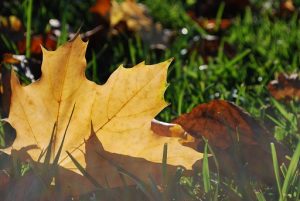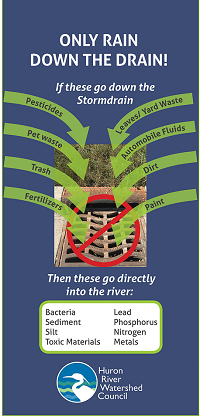 We’re just past Autumn’s peak color burst and it’s time to properly deal with all the leaves left on the ground. There are a few ways to dispose of your leaves:
We’re just past Autumn’s peak color burst and it’s time to properly deal with all the leaves left on the ground. There are a few ways to dispose of your leaves:
- Mow right over them and leave the bits to feed your lawn (easiest method).
- If you have a lot of leaves, you can gather the shredded leaves and compost them and/or use them as mulch for your garden beds, shrubs, and trees.
- Rake whole leaves up and make “leaf mold.” You’ll have some free compost in the future but keep in mind that whole leaves take longer to breakdown so plan for your pile “to stew” for a couple of years.
- Find out how your city/township collects leaves and gather your leaves for pick up. Some areas vacuum leaves from piles but most only gather from composting bins and leaf bags.
 When leaves and debris end up in the street, they can clog stormdrains and cause flooding. When large amounts of leaves wash down stormdrains and into creeks and the river, they reduce oxygen and degrade fish habitat.
When leaves and debris end up in the street, they can clog stormdrains and cause flooding. When large amounts of leaves wash down stormdrains and into creeks and the river, they reduce oxygen and degrade fish habitat.
As part of our outreach project in the Honey Creek area, a team of seven HRWC interns took to the streets this past August to get the word out about the importance of keeping stormdrains clear of trash and other kinds of pollution. Together they labeled 498 stormdrains in residential areas while distributing 1,258 door hangers at homes along the streets they labeled. To learn more about Honey Creek, go here.
In addition to clearing your yards of leaves or for those who don’t have yards and still want to help, check out our Adopt-a-Stormdrain program. Through this unique give-back program, you can set your own volunteer hours and meet neighbors.



